- Friday, May 17, 2024
Since 2014, the Indian railway network, one of the largest in the world, has seen major initiatives being undertaken in terms of speed, effectiveness and safety.
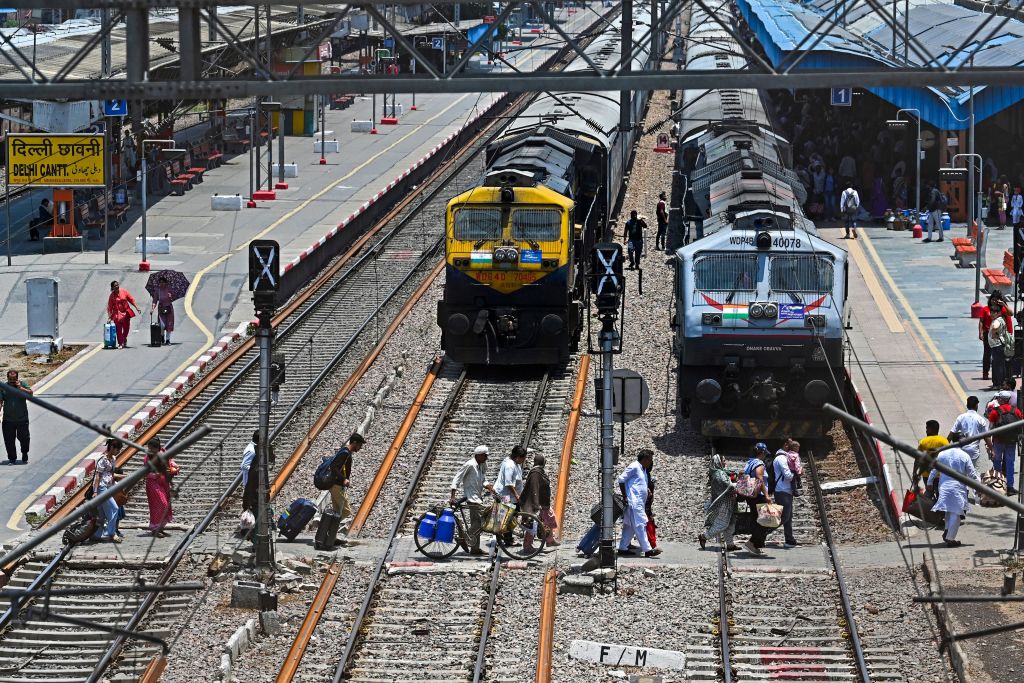
By: Twinkle Roy & Shubham Ghosh
FOR any developing economy, especially if it is one of the fastest growing ones, building the transport infrastructure is a key priority. In India, the world’s seventh largest country, the railways constitute an important pillar of transport infrastructure. Laid down by the former British colonisers nearly two centuries ago, the railways have played a significant role in the history of the subcontinent over time. From a medium for colonial exploitation to unifying the nation to emerging as a vehicle for quick and equal development, the railways in India have played diverse roles over the centuries.
Today, under the leadership of prime minister Narendra Modi, the sector has witnessed a significant transformation. He recently promised that under his probable third term in power, the Indian railways will see a revolution.
The Indian Railways is preparing a mega 100-day plan for the next government and that includes the roll-out of the Vande Bharat sleeper train, completion of a major project in the northern Union Territory of Jammu and Kashmir that will link it with the rest of the country and also procurement of the rolling stock for the much-anticipated bullet train project.
Read: In massive push to Indian Railways, Modi launches 2,000 projects worth £4b
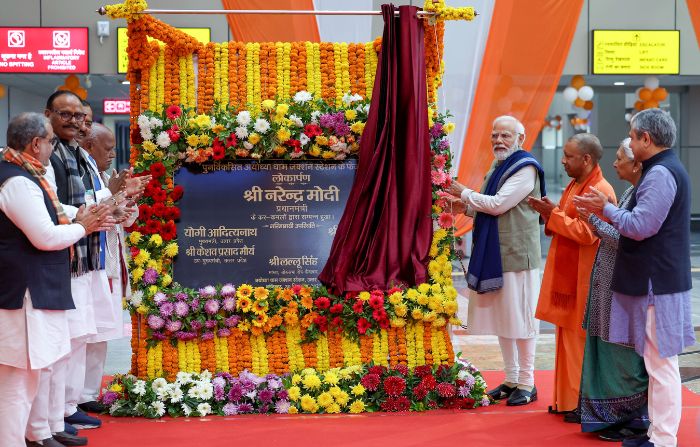
Managing the Indian Railways and directing it towards excellence has not been easy. The railways are India’s largest public sector undertaking which not only operates transportation of people and goods but also have commanded a political significance over the years. In times when India had coalition governments, the railways used to be milked by opportunistic regional heavyweights to promote populism.
Successive railway ministers prioritizing their own states as beneficiaries in railway budgets was a common picture once. In 2016, two years after becoming the prime minister, Modi stopped the practice by scrapping the tradition of presenting the railway budget and merged it with the general budget.
WATCH: When India railways minister showed something to Apple chief Tim Cook and he said ‘wow!’
In November that year, Modi, who is stated to have sold tea at railway stations as a child, had said while addressing railway employees that he had a special affection for the railways that the country’s largest public transporter should change along with the century. “There should be new speed, progress and new capacity,” he had said.
The prime minister has subsequently shown that he is more interested in making the Indian railways more efficient and financially strong and not leave it as a sector to be exploited for political gains.
The railways received a major boost in 2021 when the Modi government launched the PM Gati Shakti National Master Plan to set up multimodal connectivity infrastructure to various economic zones. The PM flagged off the project – which is essentially a digital platform to bring together various ministries, including railways, for integrated planning and implementation of infrastructure connectivity projects.
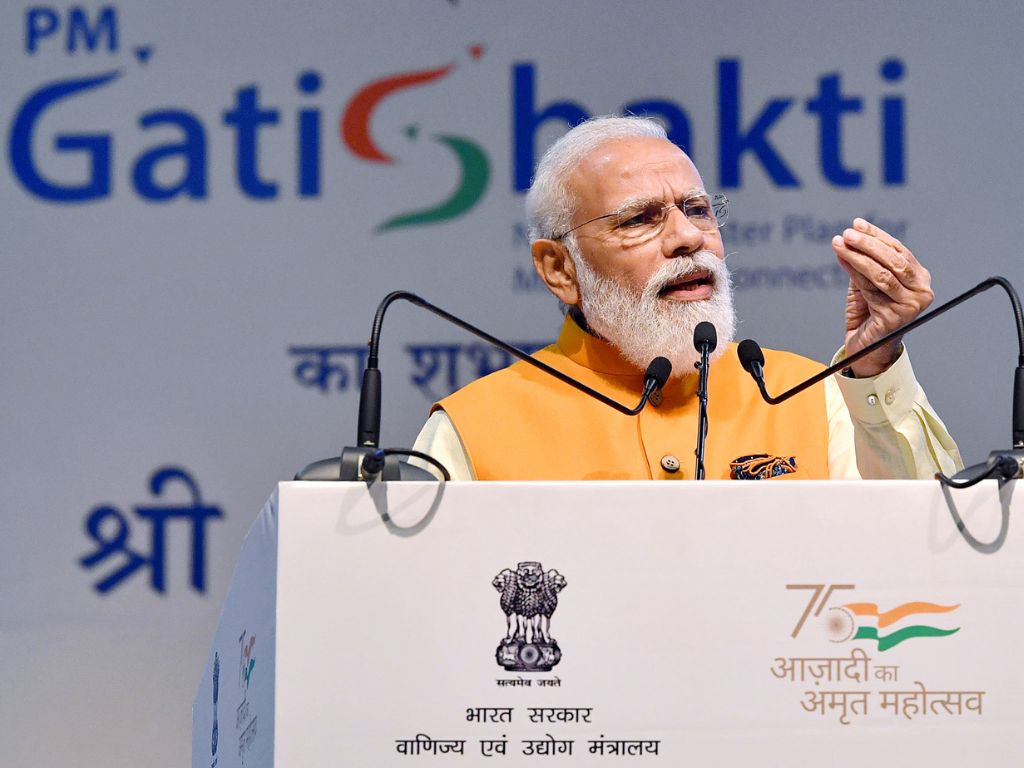
Since the railways are a major mode of transportation in India, it is needless to say that it gained significantly under a plan such as Gati Shakti. Between 2009 and 2014, railway lines in India were being laid at an average of four kilometres per day. It has now gone up to 14 kilometres daily. The 2022-23 fiscal saw the completion of more than 5,400 kilometres, which is an all-time high. People, goods and services are being moved through the seamless connectivity, implying a consolidation of the national economy in less time and more effectively.
The railways ministry set up the Gati Shakti Directorate in May 2022 to bring coordination and better efficiency in the system to lay additional railway infrastructure and increase the railways’ market share in India’s cargo loading and reducing the cost of logistics.
Forty-eight Gati Shakti Multi-Modal Cargo Terminal was commissioned till June 30, 2023, across India, the ministry informed in August.
The Dedicated Freight Corridor (DFC) is one of the largest projects that the Indian Railways has executed till date linking the four metropolitan cities of Delhi, Mumbai, Kolkata (Howrah) and Chennai and two diagonals between Delhi and Chennai and Mumbai and Kolkata (Howrah).
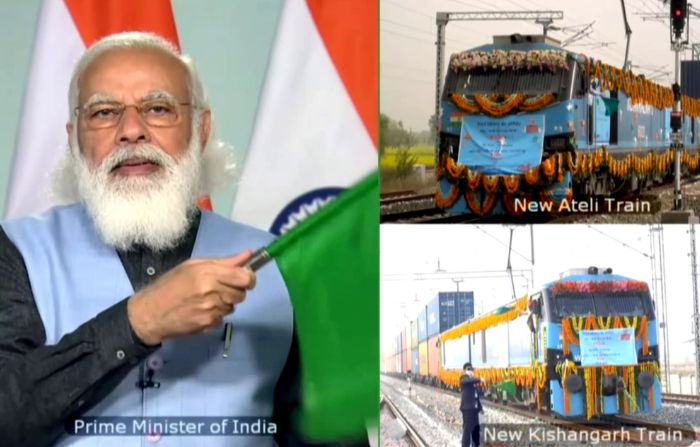
Running passenger and freight trains on the same tracks often causes congestion on routes and affects timely operations. To avoid slowdown and loss of business minutes, the DFC for freight trains was conceived in 2008 and it would run through nine states and involve acquisition of nearly 11,000 hectares of land. Two DFCs, namely Eastern DFC (EDFC) and Western DFC (WDFC) were approved by the government in 2008.
The project was hit in the initial years by land acquisition and financial issues, causing delays in finalising contracts. Till 2014 when Modi became the PM, only 88 per cent of the total land was acquired. The delay resulted in the railways losing more traffic and revenue to road transportation and a rise in logistics cost, impacting the overall trade. But the situation witnessed a big turnaround after 2014 when the project was fast-tracked with allocation of more funds and brought under periodic review by the prime minister.
The EDFC, which has been aided by the World Bank in funding, became operational in November 2023 and joins the northern state of Punjab to the eastern state of West Bengal. On an average day, nearly 140 freight trains carrying coal and steel run on the high-speed and high-capacity corridor. Work for the WFDC is still underway and when completed, it is likely to become the busiest freight route in the country, carrying more than 280 million tonnes of cargo by the middle of the 2030s.
In March, while dedicating two new sections of the DFC, one each in the EDFC and WDFC in Ahmedabad in the Gujarat state, Modi said, “This separate track for goods trains improves speed and is important for agriculture, industry, export and business. In the last 10 years, this freight corridor, connecting the east and west coasts, has been almost completed.”
The Modi government has also focused equally well on improving passenger convenience while travelling on trains and on reducing travel time in a big country such as India. While semi-speed trains such as Vande Bharat and Amrit Bharat trains have been introduced, work is in full flow for the bullet-train project. Besides, projects such as RapidX (NaMo Bharat), a quick rail transport system operated by the National Capital Region Transport Corporation in India’s National Capital Region (NCR) has been started to replace the local train network.
One of the Indian Railways’ major innovations in the Modi era have been the Vande Bharat trains. As a prime example of the country’s ‘Make in India’ success story, the railways launched its first indigenous high-speed train – Vande Bharat Express – the first of which was flagged off on February 15, 2019, connecting New Delhi with three major destinations in the northern state of Uttar Pradesh – Kanpur, Prayagraj and Varanasi.

Since then, Modi has gone on to inaugurate several Vande Bharat trains – both in person or through video conferencing — and as of March 2024, 100 such trains were criss-crossing the nation. These trains can run up to a maximum speed of 160 kilometres per hour and are equipped with top facilities such as bio-vacuum toilets, GPS-based audio-visual passenger information system, and others. Speed, safety and services are the hallmarks of these trains that are manufactured at Integral Coach Factory (ICF) in Chennai in the southern state of Tamil Nadu.
The train is being constantly upgraded and in 2022, the Indian Railways came up with Vande Bharat 2.0 with the first train being inaugurated by Modi on September 30. It connected Gandhinagar in Gujarat to Mumbai in Maharashtra. Till June 2023, the overall utilisation of Vande Bharat trains has been nearly 100 per cent.
Work is currently underway to begin Vande Bharat sleeper trains that would make overnight journeys unlike the operational ones with chairs that cover medium distances.
The Indian Railways has aimed at more modernisation and development by unveiling plans to procure 4,500 new Vande Bharat trains by 2047, the year India completes 100 years as an independent nation.
The Amrit Bharat Express trains are no-frills superfast trains introduced by the Indian Railways on January 1, 2024, mainly to cater to migrant labourers. Another example of the Modi government’s push for ‘Make in India’ vision, they operate as non-air-conditioned-cum-unreserved class service and connect cities that are more than 800 kilometres apart or require over 10 hours of existing services. The train, run by push-pull technology, comprises two locomotives manufactured at Chittaranjan Locomotive Works in the eastern state of West Bengal and 22 coaches made at ICF.
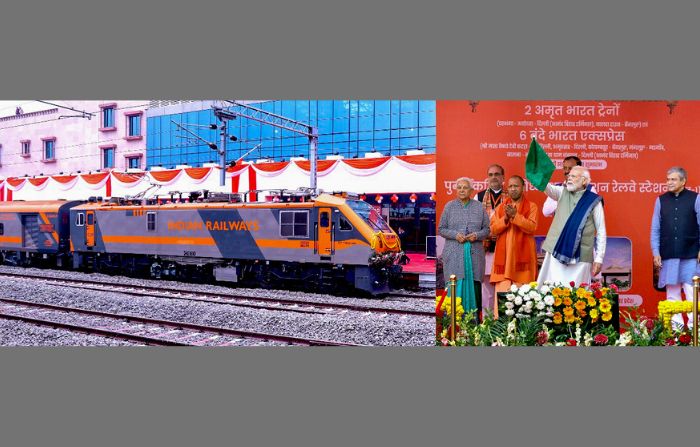
The role of BEML Limited (formerly Bharat Earth Movers Limited), headquartered in Bengaluru, in facilitating the Indian Railways’ giant leap forward cannot be overlooked. It has provided significant impetus to the domestic rail component manufacturing industry. Last month, Indian railways minister Ashwini Vaishnaw inaugurated the carbody structure of the Vande Bharat sleeper trains that have been manufactured by BEML in Bengaluru.
Shantanu Roy, CMD of BEML Ltd said, “We are delighted to be a part of creating this milestone that will facilitate comfort and world-class facilities while minimizing travel time. Our production is operating at full capacity, and the entire manufacturing and assembly process is undertaken at BEML, emphasizing our commitment to quality and precision by specialised team of engineers and staff.”
BEML, which makes a variety of heavy equipment, such as those used for earth moving, railways, transport and mining, has been manufacturing rolling stock for the railways and metro (rapid urban transport) trains in various Indian cities since the 1980s.
Perhaps the biggest dream that PM Modi offers to the people of India is about the bullet train, which will connect Mumbai and Ahmedabad – located 508 kilometres away. Vaishnaw recently said the first phase of the project connecting Surat to Bilimora in Gujarat will be operational by August 2026.
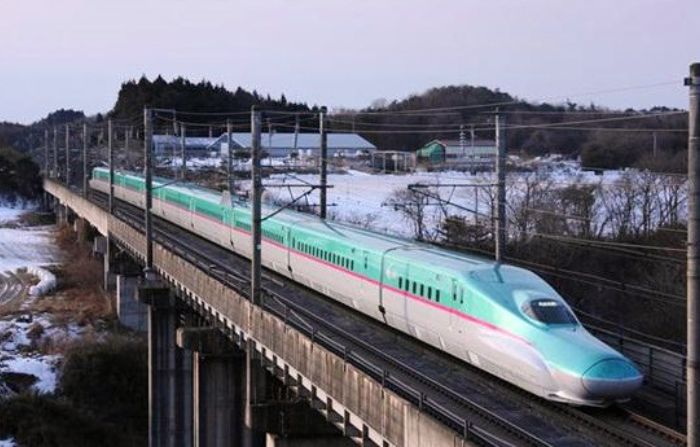
The National High Speed Rail Corporation Limited (NHSRCL) was incorporated in February 2016 to finance, build, maintain and manage India’s High Speed Rail Corridor. It was modelled as a ‘Special Purpose Vehicle’ in the joint sector with equity participation through the railways ministry and the governments of the two states of Gujarat and Maharashtra.
Once completed, the bullet train will run through a mountain tunnel and cover India’s first undersea rail passage.
While critics have questioned the purpose of the bullet train project in India, which is still a developing country, those supporting it have said that it would have a number of benefits, including generating employments, boost businesses and industries such as the real-estate sector, save travel time, reduce the country’s dependence on imported fuel which is used to run conventional railways and vehicles and do a favour to the environment by reducing emission of carbon dioxide.
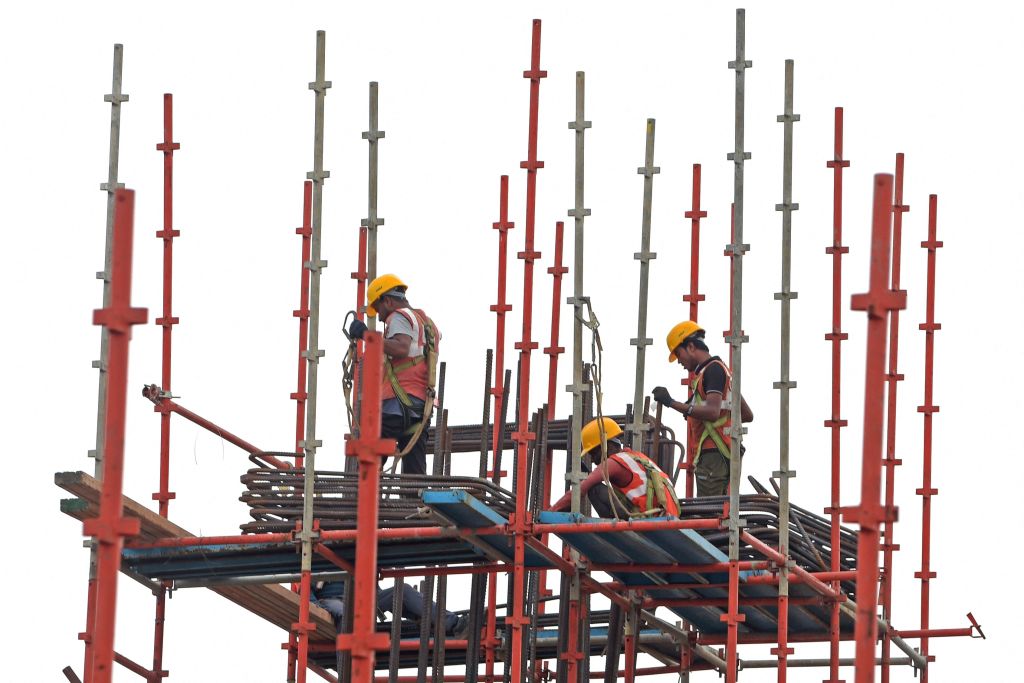
Vaishnaw emphasised that the bullet train project will prove to be a corridor of economic prosperity, transforming towns and cities along the route and becoming a learning experience for future initiatives. He highlighted that the work was being carried out with utmost care to avoid disturbing existing high-rise buildings.
The Mumbai-Ahmedabad High-Speed Rail (MAHSR) project has a sanctioned cost of Rs 108,000 crore (£10.2 billion) and as of now, 290.64 kilometres of pier foundation, 267.48 kilometres of pier construction, 150.97 kilometres of girder casting, and 119 kilometres of girder launching have been completed.
The train, which will have a speed limit of 320 kilometres per hour, will run on ballastless track, the first to be laid in India. The innovative track system features precast slabs with fastening devices and rests on reinforced concrete track bed as used in Japan’s Shinkansen, the technology which the South Asian nation is using for its inaugural bullet train.
The Indian Railways reportedly will buy E5 series of trains for the bullet train services. The plan is to purchase 18 Shinkansen bullet trains at an estimated price of Rs 7,000 crore (£663.2 million).
On October 20, 2023, Modi inaugurated a 17-kilometre stretch of the Delhi-Ghaziabad-Meerut RRTS (Regional Rapid Transit System) corridor. It is the first leg of the RRTS – India’s first mass rapid system dedicated to regional connectivity. On the same day, the PM also flagged off a RapidX train connecting Sahibabad and Duhai in Uttar Pradesh. It is the country’s inaugural semi-high-speed regional railway service which has been renamed NaMo Bharat.
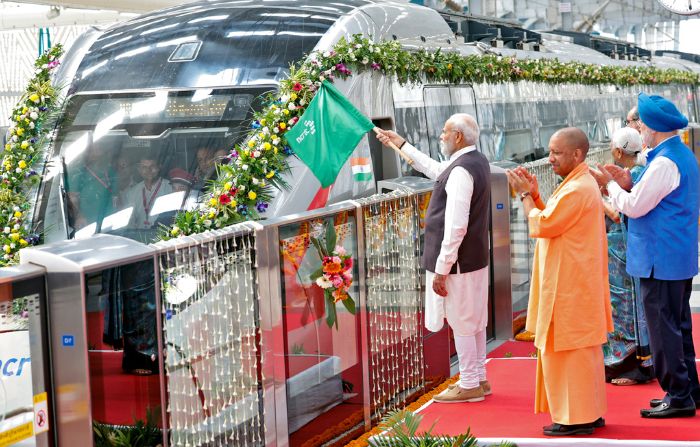
The total length of the RRTS project is 82.15 kilometres of which the remaining part is expected to be operational by June 2025.
The RRTS is a high-frequency commuter transit system with a design speed of 180 kilometres per hour and operational speed potential of 160 kilometres per hour.
The inauguration of the RRTS also saw French rail equipment manufacturer Alstom’s modern signalling system ((European Train Control System Level 3) with integrated platform screening doors making a global debut. The signalling system ensures high-level safety for trains and eliminates chances of accidents caused by human error.
In total, eight RRTS corridors have been identified to be developed in the NCR, out of which three will be implemented in phase-I, including Delhi – Ghaziabad – Meerut Corridor; Delhi – Gurugram – SNB – Alwar Corridor; and Delhi – Panipat Corridor.
The Delhi-Ghaziabad-Meerut RRTS is being developed at a cost of over Rs 30,000 crore (£2.84 billion) and will connect Delhi to Meerut in quick time.
Metro railways is another significant mode of urban transportation in India’s overcrowded cities where traffic congestion is a major headache – both for commuters and authorities.
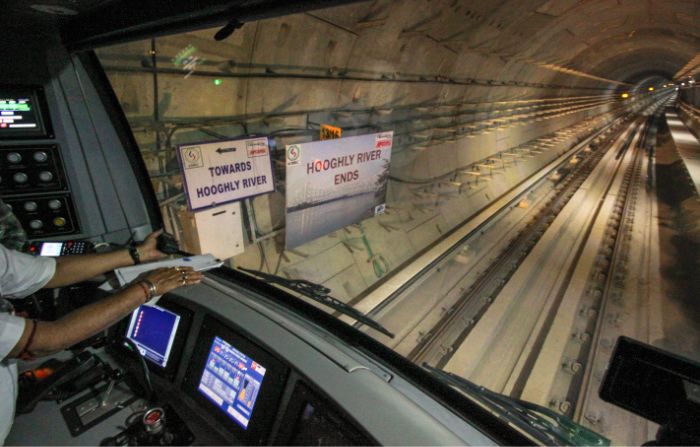
While India’s first metro railways was inaugurated in the eastern city of Kolkata in 1984 and subsequently a number of cities across the country have developed them long before Modi came to power, his government has ensured that metro projects continue to grow. On March 6, Modi flagged off several metro projects across India worth over Rs 15,000 crore (£1.42 billion) and that included an extension of the country’s oldest metro railway in Kolkata under River Ganges, a first in the country.
The PM, who took a train ride under the river after inaugurating some new sections of Kolkata Metro, including the under-water one connecting Kolkata and Howrah, said on X, “It’s a very special day for the people of Kolkata as the city’s metro network gets significantly enhanced. Connectivity will get a boost and traffic will get decongested. It’s a proud moment that the Howrah Maidan-Esplanade Metro section has the first underwater metro transportation tunnel under any major river in our country.
The extension is a part of the Kolkata Metro’s East-West Corridor, built at a cost of Rs 4,960 crore (£470 million).
The prime minister also on the same day inaugurated and laid the foundation stone for many connectivity projects for various cities of India, including Agra, Kochi and Pune.
The metro in Agra in Uttar Pradesh is the 17th in India to become operational.
KAVACH
Indian Railways is discovering ground-breaking ways to ensure that the new modernised system that is already being put on track is unencumbered by any danger or risk. One such safety measure is the KAVACH, the necessity of which has been raised again following a horrific accident in the eastern state of Odisha in June 2023 that resulted in deaths of nearly 300 people.
The KAVACH is India’s indigenously developed Automatic Train Protection (ATP) system by the Research Design and Standards Organisation under the railway ministry in collaboration with the country’s industry. KAVACH was adopted as the national ATP of India under the Modi government’s Atmanirbhar Bharat mission in July 2020.
The trials were conducted by the South Central Railway to ensure safety in trains.
The state-of-the-art electronic system with Safety Integrity Level-4 (SIL-4) prevents trains to pass the red (danger) signal and avert collision by activating the train’s braking system automatically. It also ensures safe running of trains during unfavourable weather conditions such as dense fog. It is one of most affordable SIL-4 certified technologies where the error probability is very less – one in 10,000 years.
The Mumbai Central-Virar route on the Western Railway (WR) is all set to function with KAVACH installed in it. “We have called tenders for installing Kavach technology on the Dahanu – Mumbai Central route. This will be installed on the Up and Down Fast corridor and 5-6 lines meant for long-distance trains,” a senior WR official was quoted as saying by Hindustan Times.
Seismographs in bullet train project
In a first, seismographs will be set up for the bullet-train project to ensure safety to passengers and protections to the critical infrastructure in times of earthquakes. According to NHSRCL, the Early Earthquake Detection System, which is based on Japan’s Shinkansen technology, is capable of detecting earthquake-induced tremors and shutting down power automatically. Emergency brakes will subsequently be activated and trains running in areas affected by the earthquake will stop.
Other safety measures
The Indian Railways has introduced several other safety measures to ensure that incidents of accidents are reduced.
It introduced the Rastriya Rail Sanraksha Kosh in 2017-18 to replace, renew and upgrade critical assets with a corpus of Rs 1 lakh crore (£9.47 billion) for five years.
It also set up electrical/electronic interlocking systems with centralised operation of points and signals at nearly 6,500 stations till May 2023 to reduce chances of human error.
Accidents at railway crossings are a common occurrence in India. The railways has come up with interlocking of level crossing gates at more than 11,000 level-crossing gates till May last year.
The locomotives have been equipped with Vigilant Control Devices to monitor the pilots’ alertness. They are also provided with a GPS-based Fog Safety Device in fog-affected areas.
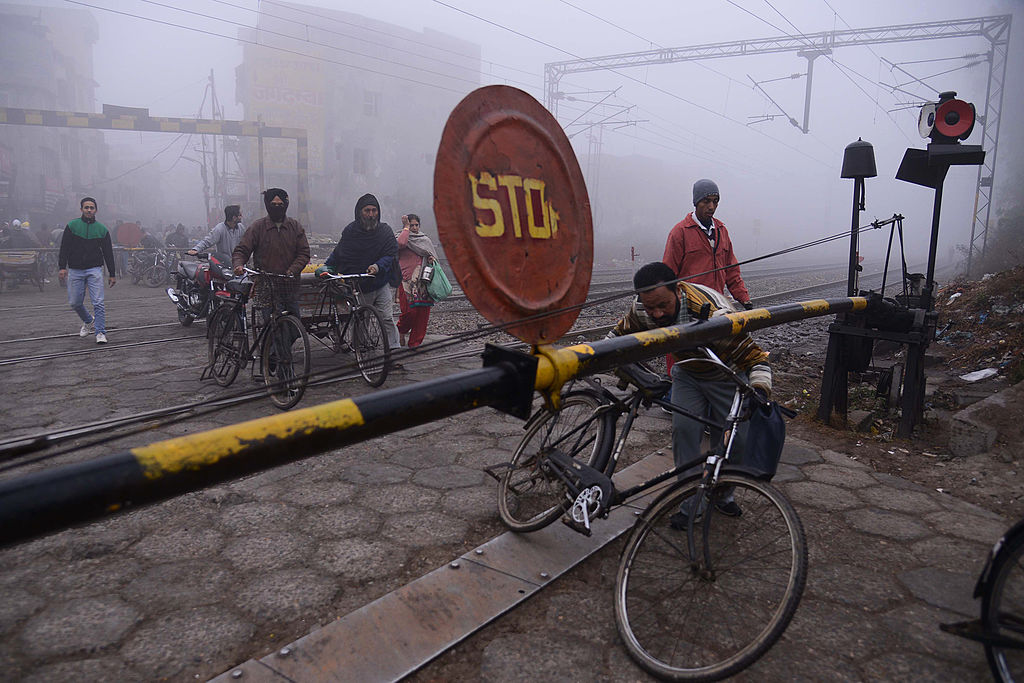
Modernisation and mechanisation of track structure and track-laying activity and regular inspection and training the staff for maintaining safe practices.
Regular maintenance of railway bridges, fire safety in train compartments, elimination of unmanned level crossings.
The Indian Railways has substantially allocated funds for upgrading railway tracks. Under the 2023-24 budget, Rs 17,296 crore (£1.63 billion) has been dedicated to renewing the tracks, Rs 39,660 crore (£3.75 billion) has been set aside for new railway lines. Rs 30,749 crore (£2.91 billion) has been channelised to double existing tracks, and Rs 4,600 crore (£436 million) for gauge conversion.
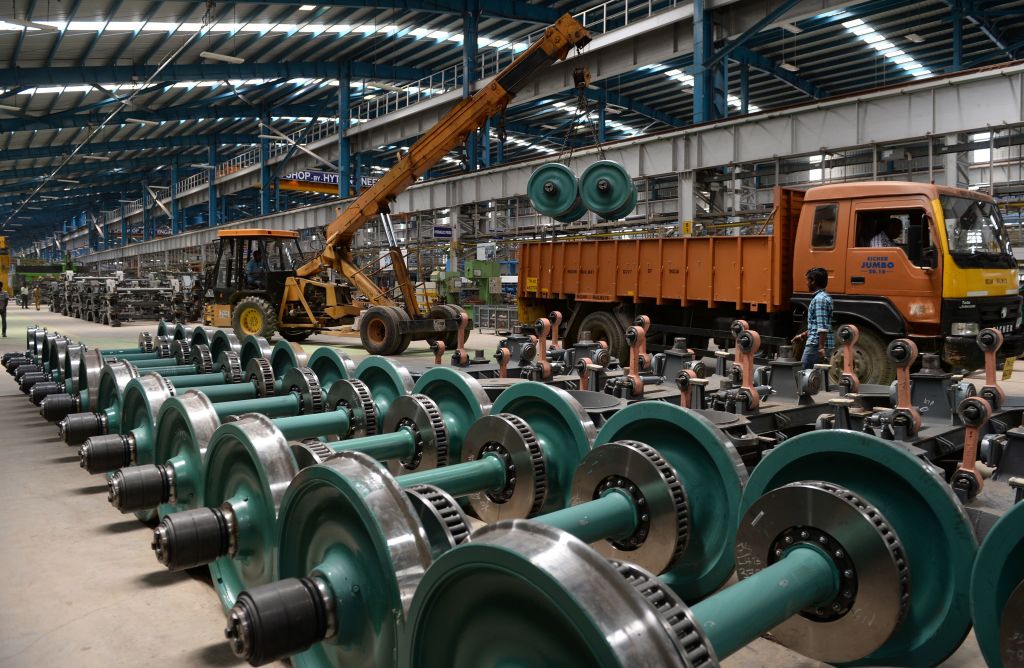
The effort towards modernisation of the railways is aided by some distinguished enterprises that are coming to the fore with innovative business alliances, formed strategically to both expand their global markets as well as help the railways and the overseas party with the rolling stock management.
Amber Group, a diversified company, has inked a joint venture with Titagarh Rail Systems, a rolling stock maker, for railway component and subsystem business.
The Modi government has also kicked off a process for developing futuristic rail infrastructure across the length and breadth of the country. Cities that are home to a million-plus population will get ‘mega terminals’ or transport hubs with multimodal connectivity. This initiative is to serve the government’s all-out effort in creating Viksit Bharat (developed India), the railway ministry said recently.
The railways has finalised a list of cities with more than a million people besides other important ones on an urgent basis. Railway zones have been asked to recommend new locations, if there are any, for the proposed terminals.
The National Rail Plan 2030, which was unveiled in 2022, envisions a big capacity and infrastructure development ahead of a surge in demand to cater to needs till 2050.
It also seeks to engage the private sector in various realms, including the operation and ownership of rolling stock, the advancement of freight and passenger terminals, and the development and management of track infrastructure.
India is not only upgrading and maintaining its railways infrastructure but also constructing new infrastructure that is no less than engineering marvels. While it already has an urban transportation train running under the river, work is also in progress to see its bullet train passing under the river in Maharashtra.
The country has also witnessed two magnificent railway bridges constructed to its northern and southern parts.
In Tamil Nadu, a vertical lift railway sea bridge — the new Pamban Bridge – is being built to replace the century-old rail bridge. The bridge spanning 2.07 kilometres connects the island of Rameswaram island with the Indian mainland and will be ready for use soon. The bridge’s construction is being carried out by the Rail Vikas Nigam Limited at an estimated cost of Rs 550 crore (£52.1 million).
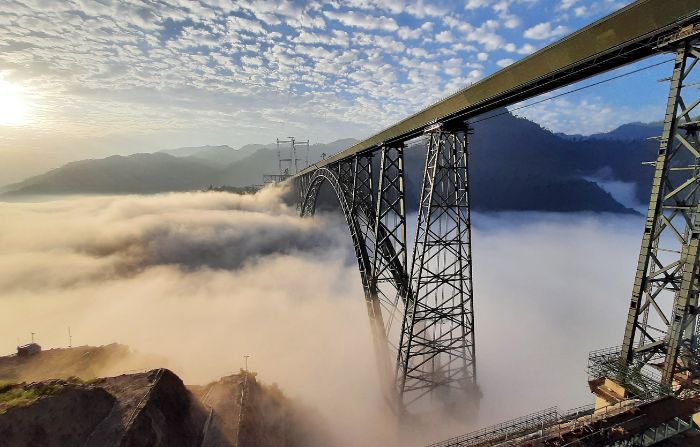
In the northern Union Territory of Jammu and Kashmir, India has built the world’s highest single-arch railway bridge over the Chenab River running 1.3 kilometres. Built at a cost of Rs 14,000 crore (£1.3 billion), the bridge is taller than the Eiffel Tower in Paris. The bridge, which was inaugurated by PM Modi in February, is 1,178 feet high above the riverbed and a part of the Rs 35,000 crore (£3.3 billion) Udhampur-Srinagar-Baramulla Railway Link project which looks to ease connectivity in Jammu and Kashmir amid complex topography and weather conditions.
The department of food has been tricky for Indian Railways. According to the report presented by the Public Accounts Committee chaired by the leader of Opposition Adhir Ranjan Chowdhury, the railways has failed to deliver consistency in the quality of food as well as food-related services.
The catering contract has transferred from the Indian Railway Catering and Tourism Corporation (IRCTC) to Zonal Railways and then again to IRCTC, as per the 2005, 2010 and 2017 catering policies, respectively. The Zonal Railways has failed to provide pantry cars in long-distance trains which take more than 24 hours to reach the destination, indirectly allowing unauthorised vendors to get on board and serve food with questionable quality. The pricing of food was also questioned.
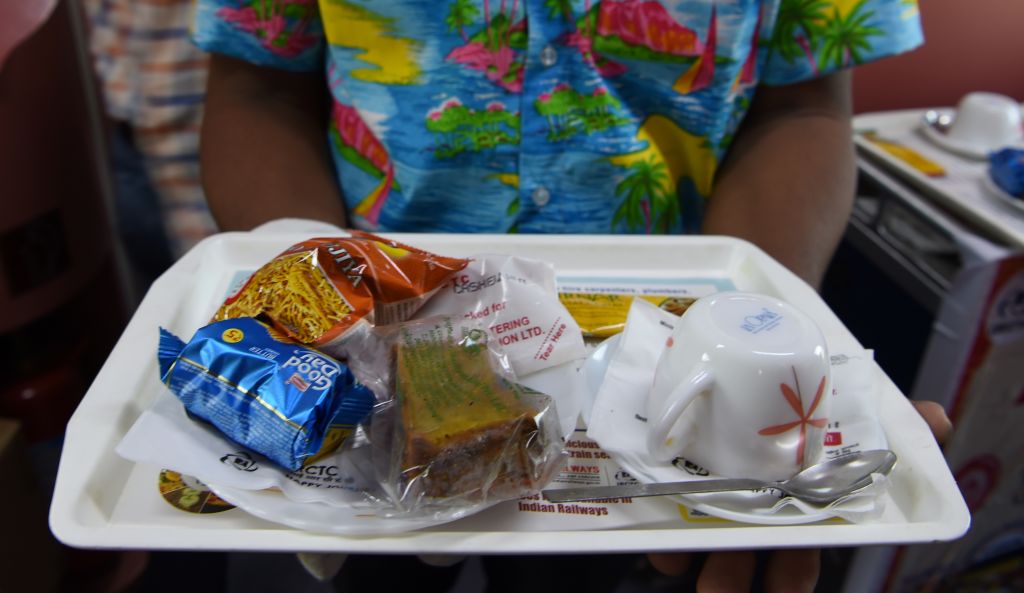
The 2017 catering policy mandated the base kitchen to be located within the railway premises but it was found that only 16 base kitchens were available within the premises whereas 115 were outside, said reports. Due to this, the food cooked could not be subjected to quality checks necessitated by the regulations.
Moreover, the 2010 policy said electric power equipment should be installed to replace the gas burners to avoid sudden fire outbreaks but it was found that 103 coaches manufactured by ICF between April 2011 and March 2016 still had centralised LPG cylinders with open fire flames.
The Indian Railways is now replacing ICF rakes with Linke Hofmann Busch (LHB) ones and only LHB pantry cars are being manufactured now. The railways aim to equip air-conditioned pantry cars with induction cooking to minimise fire incidents.
The government is also ensuring that food safety norms with certification from Food Safety and Standards Authority of India and regular examination of food quality, hygiene and cleanliness in pantry cars are maintained.
Indian Railways still has issues related to ticketing, entry of unauthorised passengers in long-distance trains, officials indulging in corrupt practices and food quality. But yet, it has not lost the opportunity to fling some major hits, right on time. With the budget allocation of Rs 2.4 lakh crore (£23 billion) to Indian Railways in 2023-24, which is more than 30 times higher than the 2004-05 budget, the Modi government is all set to transform the railway ecosystem and take it uphill from here.
![]()